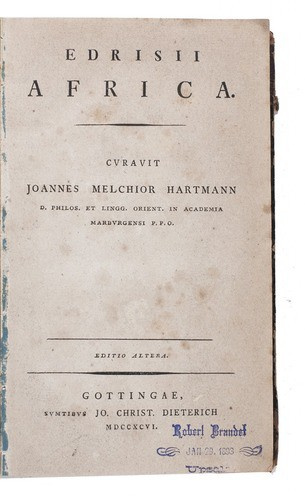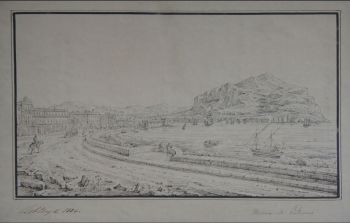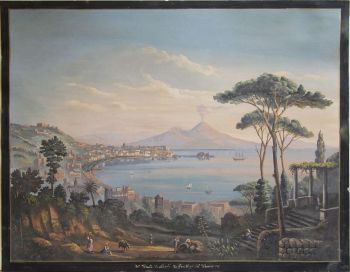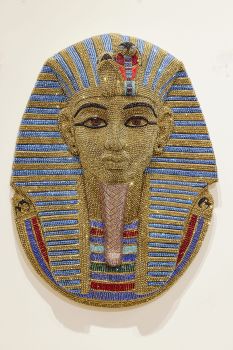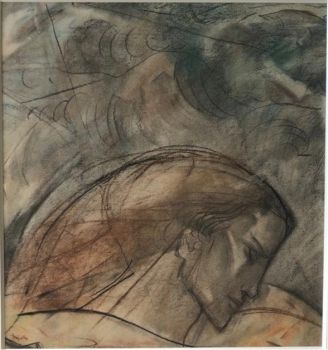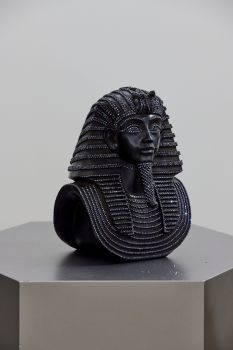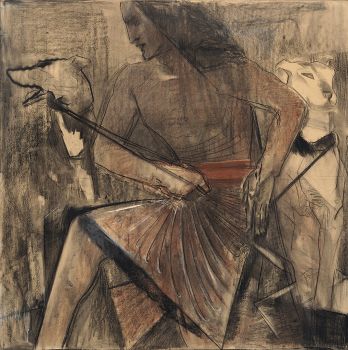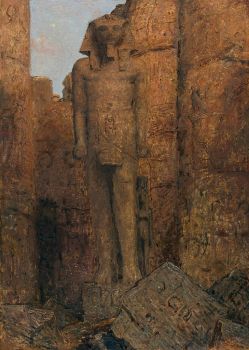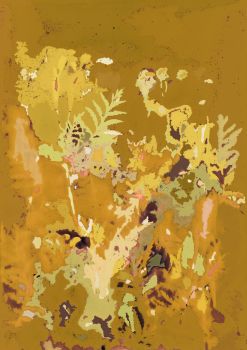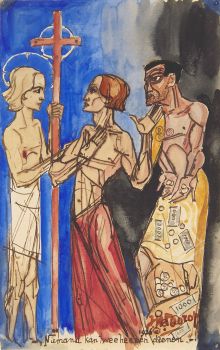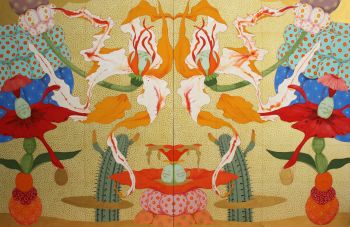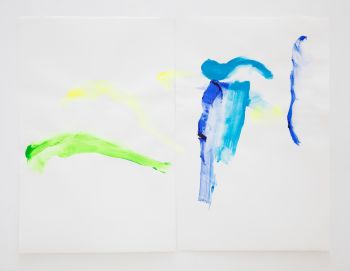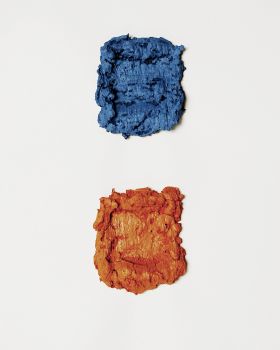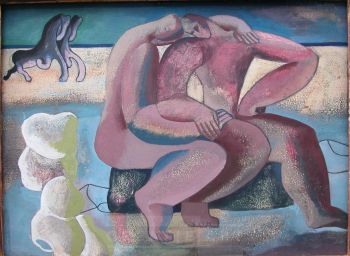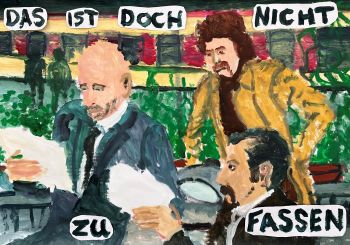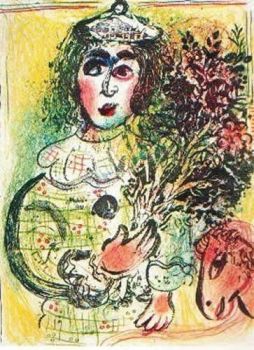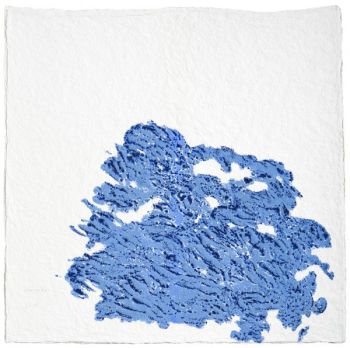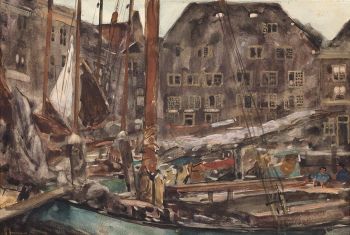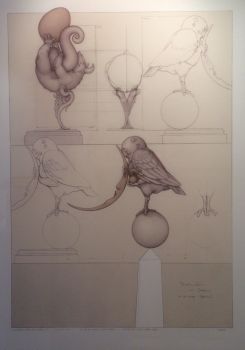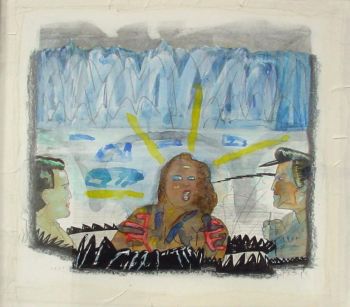Al-Idrisi's geographical account of northern Africa 1796
Muhammad Idrisi
PapierCuir
Actuellement indisponible via Gallerease
- Sur l'oeuvre d'artAL-IDRISI, Muhammad and Joannes Melchior HARTMANN (translator).
Africa.
Göttingen, Johann Christian Dieterich, 1796. 8vo.
Slightly later black half goatskin.
Second edition of a Latin translation of a work on the geography of Africa, written by the Islamic geographer and botanist Muhammad al-Idrisi (1100-1165). It deals specifically with the geography of northern Africa, Egypt and the Sahara desert, covering its soil, cities, population, mountains, deserts, rivers and monuments. Al-Idrisi also mentions various travel routes from one city to the other. Around 1138, al-Idrisi was invited to the court of the king of Sicily, Roger II, who asked him to map the world as it was then known. This map is now lost, but Roger II also asked for supplemental texts to comment on the map. "Emissaries were sent far and wide, and from the information they brought back the Kitab al-Rojari [Book of Roger] was compiled, and completed by January 1154" (Howgego). Various manuscripts containing (parts of the) Kitab al-Rojari have survived, and the present translation was based on one of them. The present work was translated and edited by the Johannes Melchior Hartmann (1764-1817), who worked from a medieval Arabic manuscript at the University of Jena.
With a library stamp. Somewhat browned and foxed throughout. Binding worn at hinges and along the extremities. Otherwise in good condition.
Gay 345; Howgego, to 1800, I5; not in Atabey; Blackmer. - Sur l'artisteMuhammas al-Idrisi (né en 1100, Sabtah, Mor. — mort en 1165/66, Sicile, ou Sabtah), était un géographe arabe célèbre et un conseiller de Roger II, le roi normand de Sicile. Peu de faits sont connus sur la vie d'al-Idrīsī. Il est né à Sabtah (aujourd'hui Ceuta, une enclave espagnole au Maroc), a passé une grande partie de sa jeunesse à voyager en Afrique du Nord et en Espagne et semble avoir acquis des informations détaillées et précises sur les deux régions. Il est connu pour avoir étudié à Cordoue pendant quelques années. Il a voyagé dans de nombreuses régions d'Europe occidentale, notamment le Portugal, le nord de l'Espagne, la côte atlantique française et le sud de l'Angleterre. Il a visité l'Asie Mineure à l'âge de 16 ans. Vers 1145, al-Idrīsī entra au service de Roger II de Sicile, une étape qui marqua un tournant dans sa carrière. Roger II lui a confié la réalisation d'une carte du monde, aboutissant à l'achèvement de trois travaux géographiques majeurs: un planisphère d'argent sur lequel était représentée une carte du monde, une carte du monde divisant la Terre au nord de l'équateur en 7 zones climatiques et un texte géographique comme clé du planisphère. C'était son opus magnum de géographie descriptive, connu sous le nom d'Al-Kitāb ar-Rujārī («Le livre de Roger»). Al-Idrīsī a achevé le livre en janvier 1154, peu de temps avant la mort de Roger. Le planisphère argenté a été perdu, mais les cartes et le livre ont survécu. Al-Idrīsī avait une bonne compréhension de la littérature arabe, et il était également un poète accompli. Les dernières années de sa vie sont inconnues. Son nom complet était Abu Abdullah Muhammad al-Idrisi al-Qurtubi al-Hasani as-Sabti (أبو عبد الله محمد الإدريسي القرطبي الحسني السبتي)
Artwork details
Related artworks
Engelbert Kaempfer
LIVRE ENGELBERT KAEMPFER1651 - 1716
Prix sur demandeZebregs & Röell - Fine Art - Antiques
Tilmanus Nicolaus Maastricht
Missale Romanum avec montures en argent hollandais1788 - 1792
Prix sur demandeJacob J. Roosjen SRI
Antonie Derkinderen
Memory book Exhibition of Dutch Painting1892
Prix sur demandeKunsthandel Pygmalion
Hermann Nitsch
"UNDER MY SKIN" Signed book incl. small artwork and DVD in a matching box2010 - 2014
Prix sur demandeGallerease Selected
Antonie Derkinderen
Memory book Exhibition of Dutch Painting1892
Prix sur demandeKunsthandel Pygmalion
Yoko Ono
YOKO ONO: "ARISING" SIGNED BOOK PLUS SMALL ARTWORK 2010 - 2014
Prix sur demandeGallerease Selected
Engelbert Kaempfer
LIVRE ENGELBERT KAEMPFER1651 - 1716
Prix sur demandeZebregs & Röell - Fine Art - Antiques
Tilmanus Nicolaus Maastricht
Missale Romanum avec montures en argent hollandais1788 - 1792
Prix sur demandeJacob J. Roosjen SRI
1 - 4 / 22- 1 - 4 / 10
- 1 - 4 / 24

